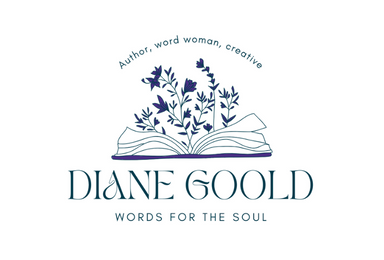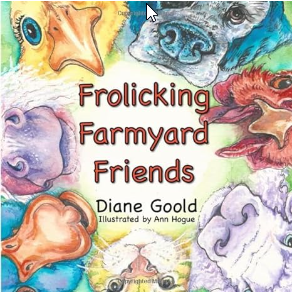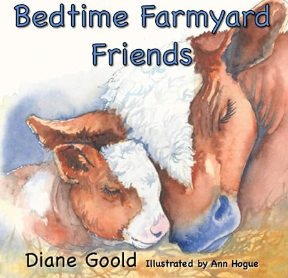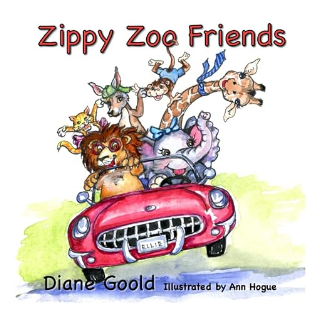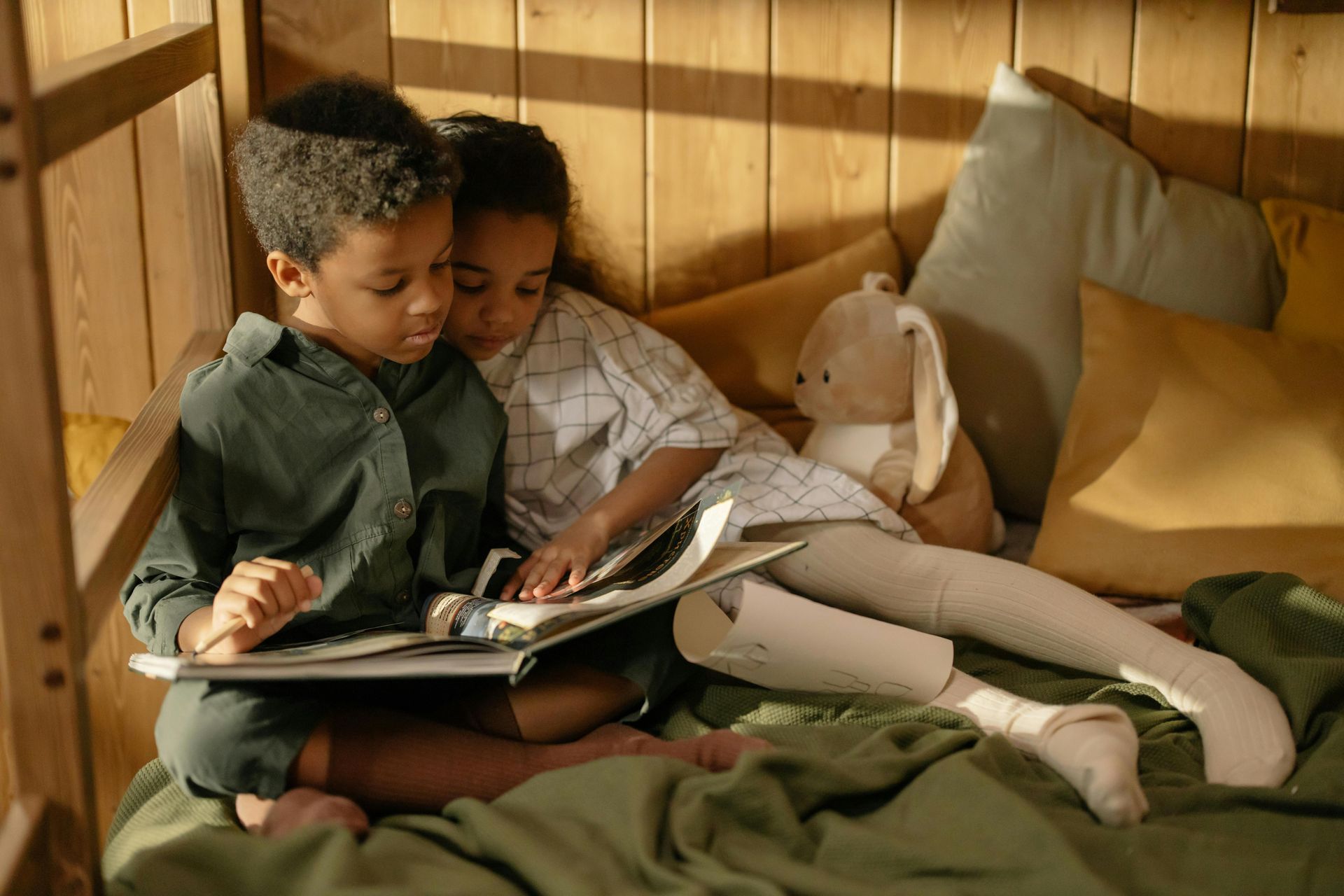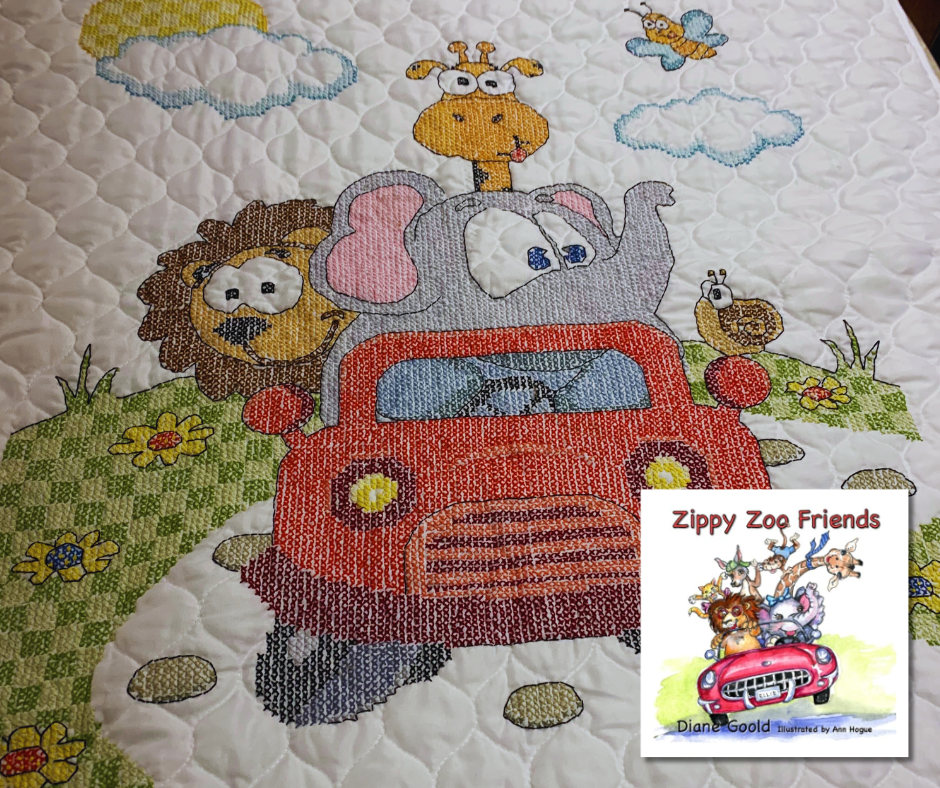Office Hours
- Mon - Fri
- -
- Sat - Sun
- -
913-954-2856
The Value of Rhyming Books For Kids

Key Highlights
- Rhyming books are important in helping young children love language and reading.
- The repeating patterns and rhymes help kids get ready for reading.
- Rhyming books are good for children of all ages, not just toddlers.
- These books introduce new words and ideas in a fun way.
- Make reading fun by inviting children to join in the rhymes.
Children’s books, such as 'Aliens Love Underpants,' have a special charm that can create a lasting love of reading in young readers. Rhyming books are one of the best types for helping with early literacy, offering a big surprise through their catchy rhythms and easy-to-follow patterns, making it fun for young children. These books provide a great way to show kids the joys of words and language.
Why Rhyming Books are Essential for Child Development

Rhyming books are a fun and useful way to help a child grow in many areas, including language, thinking skills, and emotional development, much like in Edward the Emu stories. With fun rhymes and interesting stories, these books make a learning space where kids can learn, grow, and do well.
When a child listens to rhyming stories, they start to notice the rhythm and sounds in language. This helps them understand sounds better, learn new words, and understand language overall. Many of these books also teach important life lessons and social skills. These lessons include friendship, kindness, and how to solve problems, which helps a child’s emotional growth.
Enhancing Language and Literacy Skills through Rhymes
Exposure to rhyming books at a young age is very important. It helps children develop phonemic awareness skills. This skill forms a strong base for their reading journey. When kids listen to rhymes, they start to notice and change the sounds in words. This is key for phonemic awareness.
This skill helps them see that words can be split into smaller sound units, like syllables and phonemes. As they enjoy rhymes, they understand more about how spoken and written language connects.
This understanding helps them with reading fluency, spelling, and comprehension skills. By encouraging a love for rhyming, parents and teachers can greatly help children’s literacy growth. This sets them up to be confident and successful readers in the future.
The Role of Rhyming in Cognitive Development
Beyond helping with language development, rhyming books also play a big role in a child's mental growth. From a young age, kids are naturally attracted to the rhythm and repetition found in nursery rhymes and rhyming stories. These simple but effective tools can boost different thinking skills like memory, focus, and pattern detection.
The repetition in rhymes helps young kids build their working memory. They learn to expect and remember the rhyming words. This act of looking for and recognizing rhymes encourages brain activity. It also helps make stronger connections in the brain that relate to memory and language.
Also, rhyming books usually have bright illustrations and fun stories. These features grab a child's attention and help them focus. As they follow the story and spot rhyming pairs, they get better at concentrating. This focus and attention are important for learning and doing well in school.
Selecting the Right Rhyming Books for Different Age Groups
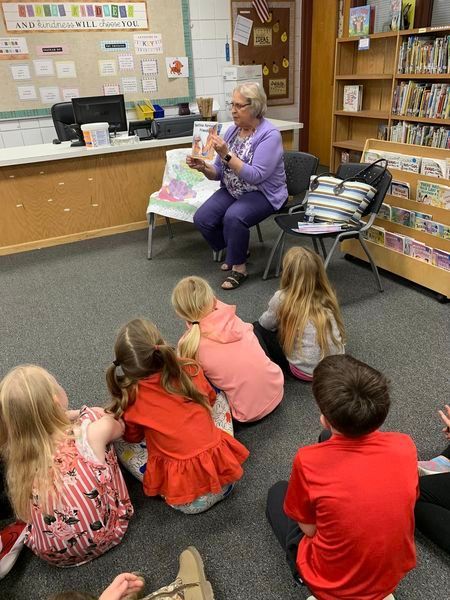
Choosing the right rhyming books for kids is important. It helps grab their attention and boosts their learning. Young children enjoy simple rhymes and repeating phrases. In contrast, older kids like more complicated wordplay and interesting stories.
When picking rhyming books, think about the child's age, interests, and reading skills. Look for books that have fun illustrations, characters they can relate to, and themes that connect with their everyday lives.
Tailoring Choices for Toddlers and Preschoolers
For toddlers and preschoolers, simple rhyming books, including a classic rhyming story, with clear pictures are best for teaching rhyme. At this age, kids are learning new words and basic ideas. Pick strong board books or picture books that have bright colors and simple illustrations to keep their attention.
Rhyming books for young children should:
- Use repeating phrases and easy rhyme patterns.
- Talk about familiar things, like objects, animals, or daily activities.
- Have a simple story that is easy to understand.
- Include chances for kids to interact, like pointing to pictures or joining in with rhyming words.
Some popular books for this age group are "Goodnight Moon" by Margaret Wise Brown, "Chicka Chicka Boom Boom" by Bill Martin Jr. and John Archambault, and "The Very Hungry Caterpillar" by Eric Carle.
Recommendations for Early Grade School Children
As children transition into early grade school, they can enjoy rhyming books with more complex vocabulary and storylines. Look for books with engaging narratives, humor, and wordplay that challenge their growing language skills. Consider books that introduce new concepts, spark curiosity, and encourage a love for reading.
Here’s a list of books that would be suitable for early grade school children:
"Frolicking Farmyard Friends"
"Bedtime Farmyard Friends"
"Zippy Zoo Friends"
These books introduce children to different genres, such as poetry and humor, and encourage them to think creatively and critically.
Incorporating Rhyming Books into Daily Reading Routines

Creating a steady reading habit is important for helping young children develop a love for books. Taking time each day to read aloud lets kids dive into the world of stories.
You can do this by snuggling with a book before bedtime or finding a calm spot during the day. Making reading a regular part of your routine shows that reading is both valuable and fun.
Tips for Engaging Young Readers with Rhymes
Reading aloud is a great way to connect with young readers and make it more fun. You can use funny voices, make silly faces, and take dramatic pauses to grab a child's attention and make the story exciting.
Ask questions and make guesses to get kids involved. You can point out rhyming words and make the session fun by clapping to the rhyme's beat. You can even get children to make up their own moves to go with the story.
For example, when you read, "The wheels on the bus go round and round," you can move your hands in circles. These fun activities not only make the reading enjoyable but also help kids listen better and understand the story well.
Making Reading a Fun and Interactive Experience
Beyond the book, there are many ways to keep the fun going with rhymes, including gophers and hares having fun with rhyme games. You can make it interactive by asking kids to make their own rhymes. Start with a simple line like "The cat sat on the…" then let them choose a word that rhymes.
Playing rhyming games is another great way to help kids learn rhymes. You can try a game like "I Spy" using rhyming words. For example, you might say, "I spy with my little eye, something that rhymes with 'dog,'" then let the child guess the answer (like 'log').
These activities not only help with language skills, but they also spark creativity and keep learning fun. A playful and gentle way to teach language can help kids love words and reading.
The Impact of Rhyming Books on Phonemic Awareness
Rhyming books are very important for helping a child learn to read. They support phonemic awareness, which means the ability to hear, recognize, and change the sounds in words.
When we let children hear rhymes, we help them notice and enjoy the sounds in words. This builds a strong base for reading well and understanding how to decode words.
Understanding the Connection Between Rhyming and Reading Skills
When kids listen to rhyming books, they notice how words that sound alike, called rhyming words, are linked. This helps them learn that words are made from different sounds, known as phonemes. Changing these sounds can make new words.
This understanding is key to building strong phonemic awareness skills. These skills are very important for decoding, spelling, and reading overall. By finding and changing sounds in words, kids can better understand the parts of language. They can use this knowledge as they start to read and write.
So, adding rhyming books to a child's reading space can really help their reading skills. It can help them become strong and confident readers.
How Rhyming Prepares Children for Learning to Read
Rhyming stories are a fun way to teach rhyme and its role in language. When we expose kids to rhyming at a young age, we help them learn about sounds and word groups that make up language.
As kids enjoy rhyming stories, they start to spot and guess rhyming words. This helps them recognize and change sounds in words. This ability helps when they learn to read. They can use their knowledge of rhymes to figure out new words by recognizing familiar letter patterns and sounds.
Also, the rhythm and repetition in rhyming books boost phonological awareness. This means they learn to hear and manipulate larger sounds in words, like syllables. Developing this skill helps kids read better and understand what they read by breaking down words and sentences into simpler parts.
Creative Ways to Extend the Learning Beyond the Book
Extending learning beyond just reading a rhyming book can help young children have a better and more memorable experience. When they take part in fun activities and games that match rhyming ideas, children can improve their phonemic awareness while enjoying themselves.
You can change a simple reading time into an exciting learning chance. Encourage kids to make their own rhymes, join in rhyming games, and discover new words through playful activities.
Crafts and Activities Inspired by Rhyming Books
Crafts and activities give children a chance to learn by doing. They help kids understand ideas and boost their creativity. You can use a wonderful story to inspire fun crafts and activities that teach rhyming.
For example, after reading "The Cat in the Hat," kids can make their own hats using construction paper, pipe cleaners, and markers. Also, after reading "Chicka Chicka Boom Boom," they can create coconut trees with cardboard tubes, brown paint, and green construction paper.
These activities are fun and also help kids improve their fine motor skills, build their vocabulary, and understand rhyming words.
Interactive Games That Reinforce Rhyming Concepts
Interactive games are a great way to help kids learn about rhyming. They make learning fun and exciting. You can use rhyming games in everyday activities or in the classroom to engage young minds.
One easy game is called "Rhyme Bingo." In this game, you make bingo cards with pictures or words that rhyme. Then, call out words, and the children find the matching ones.
Another fun game is "Rhyming Charades." In this game, kids act out a rhyming word, and others guess what it is. These games not only improve their rhyming word skills but also help them work together, communicate, and interact socially.
In conclusion, rhyming books for kindergarten and preschoolers are very important for children's growth. They help improve language skills, boost thinking abilities, and raise phonemic awareness. These books make learning enjoyable and prepare kids for reading, offering lots of fun experiences. Parents can create a supportive space for early reading by including rhyming books in their daily activities and getting young readers involved with fun experiences. Adding crafts, activities, and games based on rhyming books can make the learning even better. Choosing the right rhyming books for different ages is essential. This helps children develop a love for reading and learning.
Frequently Asked Questions
What makes rhyming books an effective tool for early literacy?
Rhyming is a useful way to help young children learn. It makes sounds fun and engaging. Simple words and repeating patterns, like those in "Peach Pear Plum," help kids gain important phonemic awareness skills.
How can parents identify quality rhyming books for their children?
Parents can find good rhyming books by checking for fun stories with clever rhymes that read smoothly, including classics like Hairy Maclary from Donaldson’s Dairy. Books by Julia Donaldson are great examples of the best thing to consider. They should skip books with awkward rhymes or simple repeats like "Green Eggs and Ham" that don’t really add to the story.
Are digital rhyming books as beneficial as physical books?
Digital rhyming books can be fun, but physical books give young readers a better experience. When kids turn the pages, they get to touch and feel the book. They can also look closely at the illustrations in great books like "The Gruffalo" and its sequel. This helps them learn even more.
How often should children be exposed to rhyming books for optimal benefits?
For the best results, kids should read rhyming books every day. Adding these books to bedtime routines, such as reading "Baby Llama Llama Red Pajama" or playing mommy during story time, offers a fun and steady way to learn.
Can rhyming books help children who struggle with reading?
Yes, rhyming books can really help kids who have trouble with reading. Books like "Muffin McLay" and "Mother Hubbard" use fun rhymes to boost their phonemic awareness skills in Australia. I spy Tom Thumb in a rhyming book like this! This can make it easier for them to decode words and read smoothly.
Recent Articles
Similar Posts
childrens book usa, books for kids, children's books, bullying books, bullying books for children, children's books or kids books, my children's books, buy online story book for your child, kids books, popular childrens books, stories book
Contact info
(913) 954-2856
cd.goold@yahoo.com
Wathena, Kansas
Get Our Newsletter
Join the Newsletter
We will get back to you as soon as possible
Please try again later
